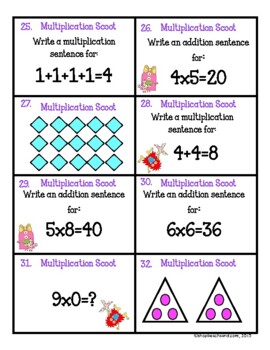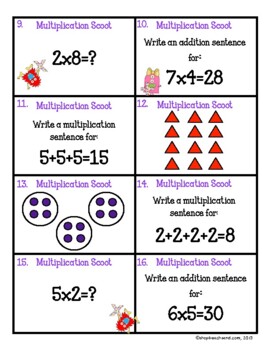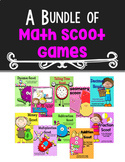Multiplication Scoot Game
- PDF
- Easel Activity
What educators are saying
Also included in
- My favorite thing about these Math Scoot Games is that my students LOVE them! Now you can get ALL of my games for one low price! These scoot games cover a wide range of math skills and they are so versatile. Not only do they make a fast-paced game, but use them with your guided math groups, put themPrice $33.75Original Price $37.50Save $3.75
Description
Multiplication Scoot is a fun, fast-paced game that will have your students engaged, learning, and having fun! Students will have the chance to practice writing multiplication (and sometimes addition) sentences from models. They will be given arrays, same size groups, and addition sentences. This is a game for students just learning the basics of multiplication. There are 32 cards, a student answer sheet, and key.
Use these cards with your guided math groups and at math centers. Try them as a formative assessment tool, too!
Click here and find my Bundle of Math Scoot Games. All 10 games at one low price!
*Feedback and Followers*
Click the GREEN ★ to follow my store and get notifications of new products and freebies! Receive credit toward future TpT purchases by reviewing this product. If you like this product, please leave a review at the product page or through "My Purchases" under "My Account" at TpT.
*Visit me on social media*
*Terms of Use*
©GinaCTeach
By purchasing and/or downloading this electronic file, you agree to the terms of use as stated below. For personal use/single classroom use only. No part of this document may be distributed, posted on the internet, copied, sold, or edited without direct permission from the author. Violations are subject to the penalties of the Digital Millennium Act. To purchase additional sharing licenses, please visit my store. All contents of this document are under copyright protection including all text, graphics, contents, and fonts. All graphics and fonts are also protected by copyright from their original author/artist.
Thank you so much for stopping by my store!







